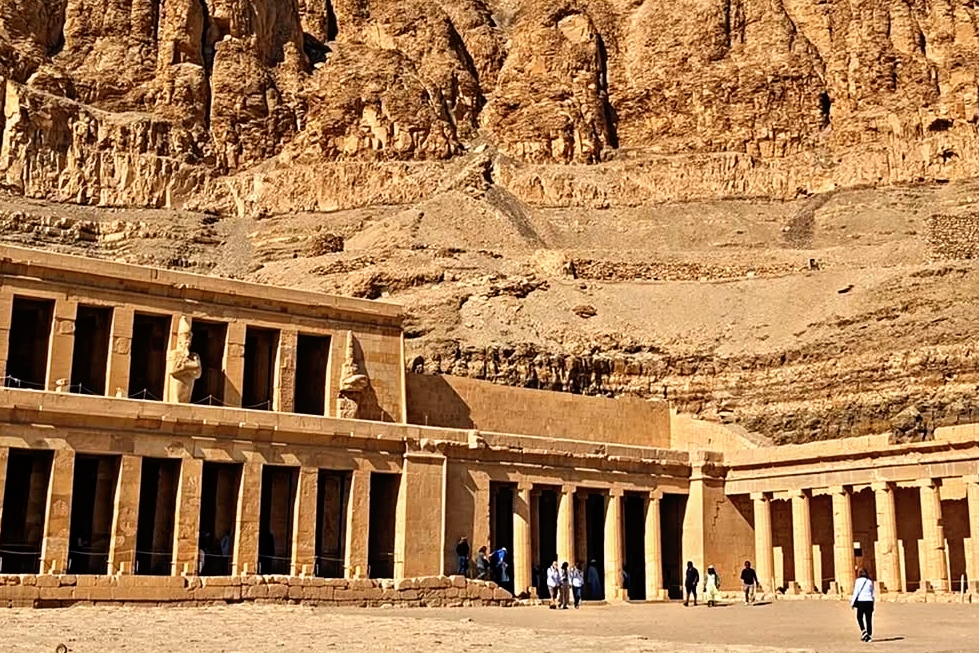The Hatshepsut Mortuary, one of ancient Egypt’s most iconic architectural marvels, stands as a testament to the ambition, vision, and legacy of Pharaoh Hatshepsut. Situated at Deir el-Bahri, near the modern city of Luxor, this grand temple reflects the grandeur of Egypt’s 18th Dynasty and its profound religious, cultural, and political significance. The Hatshepsut Mortuary is not merely a site of historical interest but a symbol of the powerful reign of one of Egypt’s few female pharaohs.
This article delves deeply into the history, design, symbolism, and legacy of the Hatshepsut Mortuary, exploring its profound impact on ancient Egypt and its continued relevance today.
Hatshepsut Mortuary: Historical Background
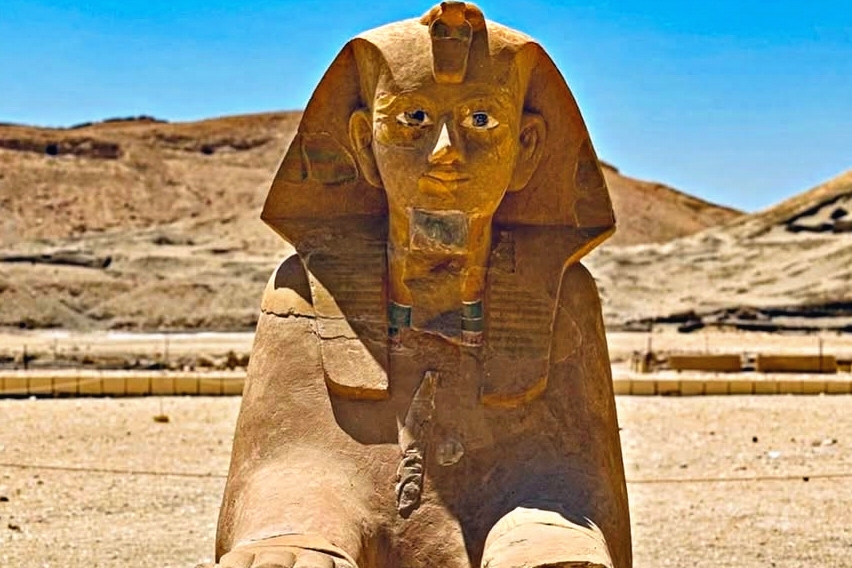
The Hatshepsut Mortuary was constructed during the reign of Hatshepsut, a ruler whose ascent to the throne was both extraordinary and controversial. Hatshepsut ruled Egypt from approximately 1479 to 1458 BCE, defying traditional gender roles by proclaiming herself Pharaoh. Her reign, marked by stability, prosperity, and cultural flourishing, is celebrated for its architectural achievements, with the Hatshepsut Mortuary being her crowning jewel.
The temple was conceived as a place of worship and as a mortuary complex where rituals honoring Hatshepsut and the god Amun could be performed. Its strategic location in Deir el-Bahri, nestled against the cliffs of the Theban necropolis, reflects its dual purpose: to honor the gods and immortalize the legacy of Hatshepsut.
Architectural Brilliance of the Hatshepsut Mortuary
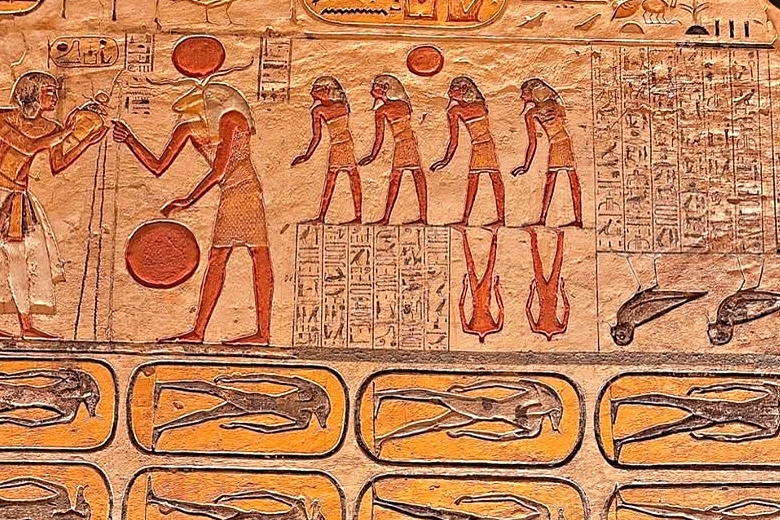
The Hatshepsut Mortuary is widely regarded as a masterpiece of ancient Egyptian architecture. Designed by Senenmut, Hatshepsut’s chief architect and trusted advisor, the temple seamlessly blends human innovation with the natural landscape.
Terraced Design
The Hatshepsut Mortuary features a unique terraced design, with three levels connected by ramps. Each terrace is supported by colonnades adorned with intricately carved reliefs that narrate Hatshepsut’s life and reign. The terraces ascend toward the cliffs, creating a harmonious transition from the man-made structure to the natural environment.
Symmetry and Harmony
Symmetry is a defining characteristic of the Hatshepsut Mortuary. The temple’s layout reflects the ancient Egyptian emphasis on balance and order, concepts central to their worldview. The alignment of the temple with the axis of the Nile River and the temple of Amun at Karnak further underscores its religious and symbolic significance.
Integration with Nature
One of the most striking aspects of the Hatshepsut Mortuary is its integration with the surrounding cliffs of Deir el-Bahri. The natural backdrop enhances the temple’s grandeur, while the cliffs themselves were believed to be sacred. This fusion of architecture and nature is a hallmark of Senenmut’s vision and Hatshepsut’s desire to link her legacy with the divine.
Symbolism in the Hatshepsut Mortuary
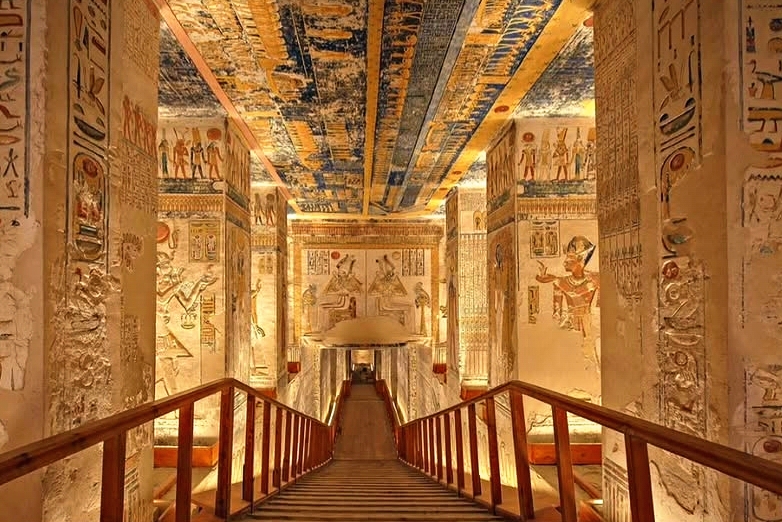
The Hatshepsut Mortuary is rich in symbolism, with every aspect of its design and decoration serving to reinforce the legitimacy and divinity of Hatshepsut’s reign.
Divine Birth Narrative
One of the most famous reliefs in the Hatshepsut Mortuary depicts her divine birth. This narrative claims that the god Amun impregnated Hatshepsut’s mother, Queen Ahmose, ensuring that Hatshepsut’s rule was divinely sanctioned. This story was a powerful piece of propaganda, legitimizing her unprecedented position as a female pharaoh.
Expedition to Punt
The temple also features elaborate depictions of Hatshepsut’s trade expedition to the Land of Punt, a significant achievement of her reign. These reliefs celebrate the wealth and prosperity brought to Egypt under her rule, highlighting her success as both a political and economic leader.
Connection to Amun
The Hatshepsut Mortuary was dedicated to Amun, the supreme deity of the Egyptian pantheon. By associating herself closely with Amun, Hatshepsut positioned herself as his chosen representative on Earth. This connection was reinforced through the temple’s alignment and its numerous depictions of Hatshepsut offering tribute to the god.
Construction and Innovations
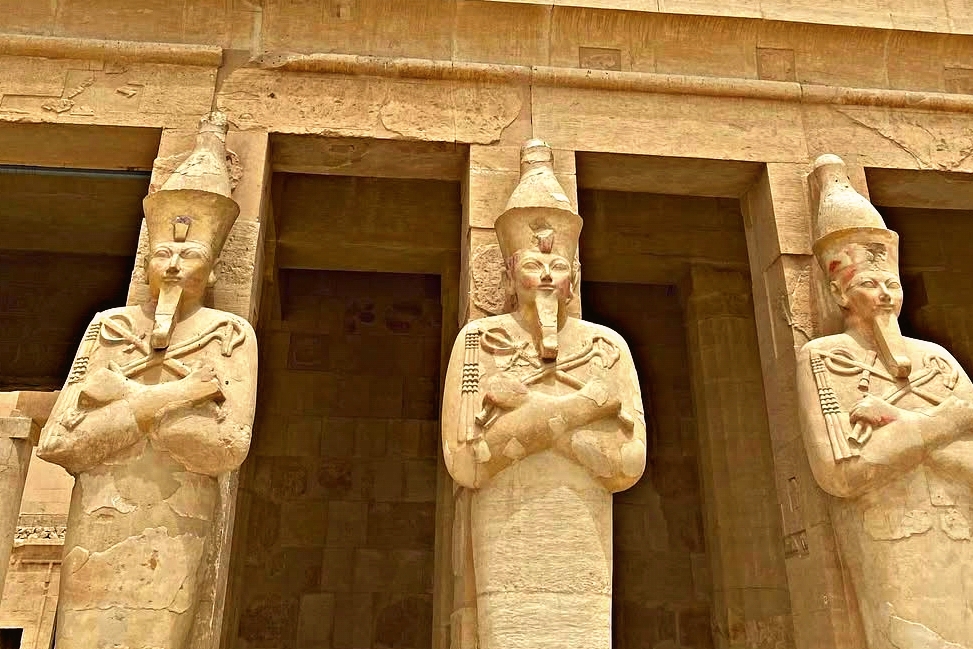
The construction of the Hatshepsut Mortuary was a monumental task that showcased the architectural and engineering prowess of ancient Egypt.
Materials and Techniques
The temple was constructed primarily from limestone, a material abundant in the region. The precision with which the blocks were cut and fitted demonstrates the advanced techniques of Egyptian builders. The ramps and terraces required careful planning to ensure structural stability and aesthetic harmony.
Artistic Excellence
The Hatshepsut Mortuary is adorned with exquisite reliefs and statues that exemplify the artistic achievements of the 18th Dynasty. These artworks not only depict religious rituals and royal achievements but also provide insights into the daily life, beliefs, and values of ancient Egypt.
Innovative Layout
The terraced design of the Hatshepsut Mortuary was a departure from the traditional pyramid complexes of earlier dynasties. This innovation reflected a shift in architectural philosophy, emphasizing the integration of structures with their natural surroundings and the use of expansive open spaces for ceremonial purposes.
Legacy of the Hatshepsut Mortuary
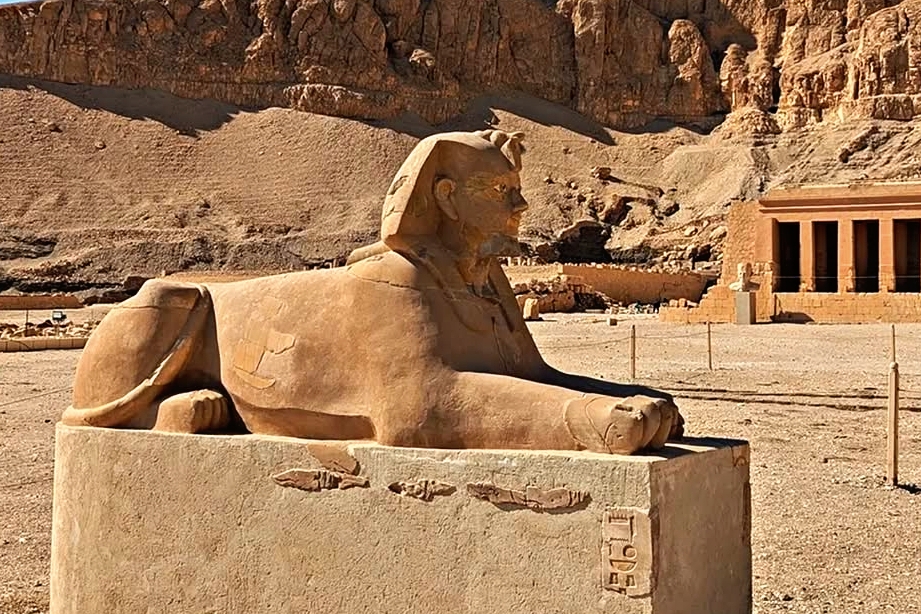
The Hatshepsut Mortuary has had a profound impact on both ancient and modern perceptions of Hatshepsut’s reign.
Historical Significance
In ancient times, the Hatshepsut Mortuary served as a center for religious and ceremonial activities, ensuring that Hatshepsut’s legacy endured long after her death. However, after her death, attempts were made to erase her from history. Statues and inscriptions were defaced, and her name was omitted from official records. Despite these efforts, the temple’s enduring presence has preserved her memory.
Rediscovery and Archaeological Study
The Hatshepsut Mortuary was rediscovered in the 19th century and has since become a focal point of archaeological study. Excavations and restorations have revealed a wealth of information about Hatshepsut’s reign, the architectural techniques of the time, and the religious practices associated with the temple.
Tourist Attraction
Today, the Hatshepsut Mortuary is one of Egypt’s most popular tourist destinations. Its stunning architecture, historical significance, and breathtaking setting continue to captivate visitors from around the world.
Challenges of Preservation
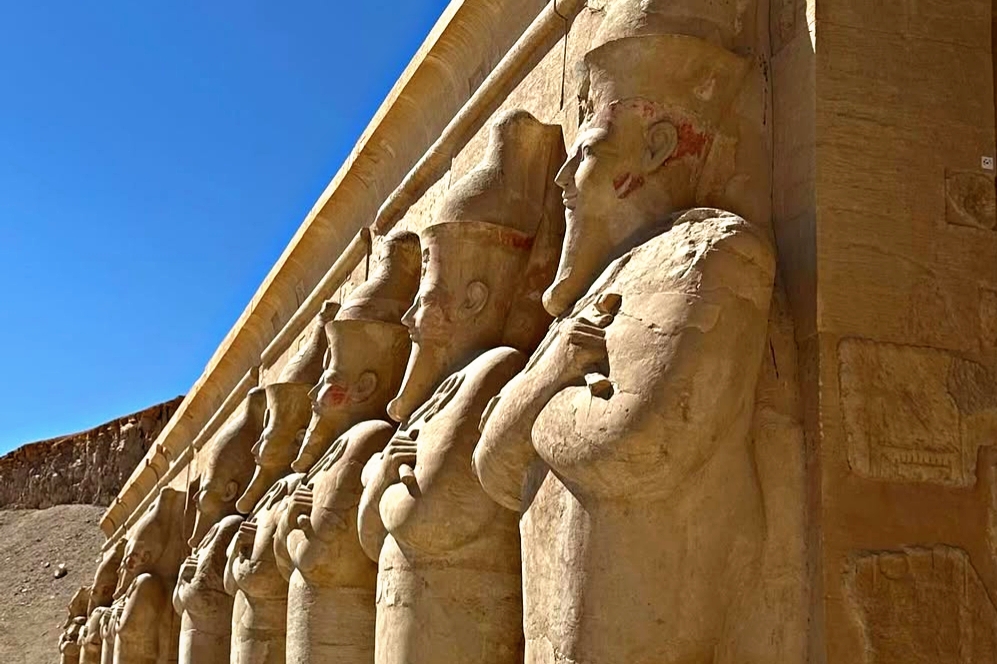
The Hatshepsut Mortuary faces several challenges, including weathering, erosion, and the impact of tourism. Preservation efforts have been undertaken to protect the site and ensure its survival for future generations. Modern techniques, such as 3D scanning and digital reconstruction, are being used to document and restore the temple’s features.
Hatshepsut Mortuary as a Symbol of Female Leadership
The Hatshepsut Mortuary is more than an architectural masterpiece; it is a symbol of Hatshepsut’s resilience and vision as a ruler. In an era when women were rarely seen in positions of power, Hatshepsut not only claimed the throne but also left behind a legacy that continues to inspire.
Her temple stands as a reminder of her achievements and her determination to carve a place for herself in history. For modern audiences, the Hatshepsut Mortuary is a testament to the enduring power of female leadership and the ability to overcome societal constraints.
Conclusion
The Hatshepsut Mortuary is a monument that transcends time, embodying the legacy of one of ancient Egypt’s most remarkable rulers. Its architectural brilliance, symbolic depth, and historical significance make it a cornerstone of Egyptology and a source of endless fascination.
As a tribute to Hatshepsut’s reign, the mortuary temple at Deir el-Bahri ensures that her story continues to be told. It is a site where history, art, and culture converge, offering a glimpse into the grandeur of ancient Egypt and the indomitable spirit of a woman who dared to defy the odds. The Hatshepsut Mortuary remains a timeless reminder of her greatness and a beacon of inspiration for all who encounter its majesty.

